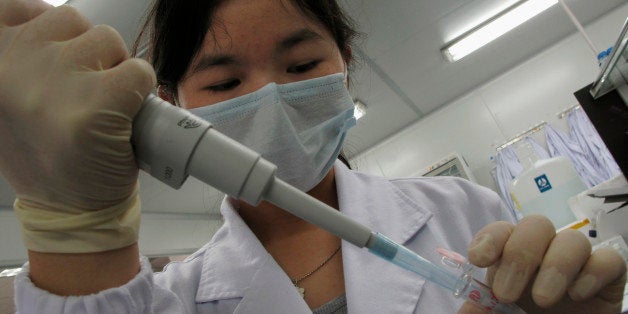
In recent weeks, much of the world has been wondering whether we're on the verge of another economic slowdown, this time with China driving the headlines.
As someone who knows the world's second largest economy well, it's fair to say that the level of concern is justified. However, I have no doubt that China will double down on key initiatives to stem turbulence in its markets and maintain a longstanding focus on achieving growth (albeit at a less rapid pace than before).
During any slowdown period, any nation's natural instinct is to look to industries and sectors that have been the pillars of growth in the past: defense, high-tech and energy, to name a few. In China's case, policymakers and business leaders recognize a unique opportunity in the life sciences to claim the world's top spot in research and development. The U.S. stands to lose out if we do not take steps to match the Chinese efforts.
According to the Council on Foreign Relations, China spent close to $1.2 billion promoting life and medical sciences in 2012 - nearly ten times its 2004 level of investment. A report by the Information Technology and Innovation Foundation found that China will have invested almost $309 billion in biotechnology between 2011 and 2016. China is in a position to gain a global leadership position in research and development (R&D) in the next 10 years.
For decades, the U.S. has been the leader in medical discovery and breakthroughs that change lives because of unprecedented investment in R&D. With moves by China and others to discover the next round of breakthrough treatments, the U.S. is at risk of falling behind in a field that has set us apart for decades. An increase in National Institutes of Health (NIH) funding alone will not lead to a secure medical R&D leadership position, as it is clear innovators across the biosciences are essential to developing new treatments for the world's most pressing medical challenges. Recent concern over the Zika virus -- specifically the need for an effective treatment and vaccine to help address its spread -- is a prime example of the need for close collaboration among public and private sector researchers.
Separately, President Obama's new moonshot initiative that aims to bring together public and private sector leaders to develop new treatments for cancer will certainly become part of the policy statements of the various candidates during this election year. That can only keep cancer research front and center in the public discourse. We are at the forefront of new discoveries and medical innovation and we should take advantage of these advancements to highlight how the benefits for patients and all this research contribute to our national competitiveness.
Rather than maintain the status quo, we must recognize that treatments and cures are products of hard work and investment that improve quality of life and serve as a pipeline of hope to millions while creating good paying jobs in the life sciences. It's clear that China is poised to do this. If America is willing to commit to this undertaking, it will lead to further medical breakthroughs, longer lives and more family-wage jobs that will keep the U.S. competitive well into the future.